
RIP Windows Live
All indications are that "Windows Live" won't be part of the Windows 8 lexicon. Microsoft seems to be re-(re-re-re)-branding the ragtag collection of applications formerly known as Windows Live-something, gussying up some of them, assigning them shorter monikers, and casting them center stage for the Metro part of Windows 8.
For those of you who depend on one or more of the current Windows Live lineup, you may find yourself stuck with orphaned apps -- which, given the status of the "legacy" Windows 7 desktop in Windows 8, shouldn't come as a huge surprise.
Windows Live started in 2005 as a re-re-branding of some MSN applications and gradually took on new cloud features. Windows Live Hotmail, Windows Live SkyDrive, Windows Live Calendar, Windows Live Contacts, and Windows Live ID have almost nothing in common, except they all run in the cloud.
"Windows Live" as a brand took on greater prominence when Microsoft decided to pull many applications out of Windows, with the Vista deadlines imminent, and thrust them into a post-Vista-ship-date collection of downloadable PC programs known as Windows Live Essentials. Such Windows apps as Windows Live Mail, Windows Live Messenger, Windows Live Movie Maker, and Windows Live Photo Gallery also have almost nothing in common, except they run on Windows and they're available for free download to any Windows customer.
All of that's changing. Here's a scorecard, for what we've seen and what's been rumored to date:
- Windows Live ID (formerly known as Microsoft Wallet, Microsoft Passport, .Net Passport, and Microsoft Passport Network), which now operates from the Windows Live Account site (confused yet?), will be rebranded Microsoft Your Account and referred to informally as "your Microsoft Account." You can see it by signing on to the new Microsoft Your Account site. It's no longer Live in name, but your Microsoft Account name is taking on sweeping new capabilities, including everything from log-on verification on local machines to billing history in the Windows Store, Xbox purchases, and ownership verficiation for cloud storage. Just don't call it a Live ID.
- Windows Live Hotmail (formerly Hotmail, Microsoft Hotmail, and MSN Hotmail) is now just Hotmail. If you log into Hotmail, you go to the Windows Live Home page, at mail.live.com, but the name Hotmail appears all by itself.
- Windows Live SkyDrive has already turned into just plain SkyDrive. Parts of Ray Ozzie's Windows Live Mesh -- formerly Live Mesh, Windows Live Sync, and Windows Live FolderShare -- have been folded into SkyDrive, although Microsoft has squashed PC-to-PC sync; the only way to synchronize files is through the SkyDrive cloud. It appears as if Mesh has met its match. (You can download the new Live-less logos for Hotmail and SkyDrive from the official Windows Live Image Gallery, if you don't mind the non-sequitir.)
- Windows Live Calendar has already appeared in numerous Metro demos as Calendar. Windows Live Contacts is now called People. Windows Live Photo Gallery morphs into Photos. Perhaps someone discovered that putting the full name of all of those apps on Metro-size tiles would drive the display font down to about 4 points. At any rate, at this point, nobody knows what the tile-ized applications will look like.
- Windows Live Messenger sits perched in a particularly precarious position, with Lync on one side and Microsoft Skype on the other. It's been integrated in various degrees into all sorts of sites and apps, including Internet Explorer, Hotmail, SkyDrive, Facebook, MySpace, LinkedIn, Windows Live Photo Ga -- er, Photos, Bing, Xbox Live, Windows Phone, the Zune (which is also biting the dust) and it's available for iPhone and iPad from the Apple App Store. It looks like Windows Live Messenger will be called Messaging, or perhaps Messenger, but it's ripe for inclusion in either Skype or Lync or both.
Tom Warren at The Verge quotes unnamed sources as saying that Messaging, Mail, Calendar, and People "are designed to be core Windows communications apps," although that characterization has to make one wonder where Skype fits into the mix. Warren also says that "the Music and Video applications are currently branded with Zune, but are built by the Xbox team. We are hearing that this branding will be removed shortly before the Windows 8 release, moving to Xbox Live for Windows as the entertainment brand for Windows 8 Music, Video and Games." One must also wonder why Xbox would retain the recently dearly departed "Live" designation.
Missing in action, so far: Windows Live Family Safety, Windows Live Movie Maker, and Windows Live Writer. It's easy to imagine Live Writer going away, absorbed by Word 15 and the new SkyDrive. But the other two aren't so readily dismissed.
We also have no idea which, if any, of the new Live-less apps will ship with Windows 8, and which will have to be downloaded from the Windows Store. Microsoft may not make that decision until it's close to the final release.
There are much greater concerns, of course. What happens to the Windows Live programs that run on Windows XP, Vista, and Windows 7? Remember, the ones that existed before we'd ever heard of Metro tiles? Is Microsoft going to pour any money into improving those "legacy" apps -- particularly when the revenue from all of them put together probably wouldn't pay Bing's bills for a day? If it won't run on a tile, will Microsoft turn a blind eye?
Compare and contrast with Apple's branding. We have iMail (formerly known as iMail, then iMail, and uh iMail, and iMail) and iTunes (aka iTunes, iTunes, and ... you get the idea). The toughest rebranding hurdle Apple customers had to clear came when the term "Mac OS" turned into "OS."
This story, "Windows Live, R.I.P.," was originally published at InfoWorld.com. Get the first word on what the important tech news really means with the InfoWorld Tech Watch blog. For the latest developments in business technology news, follow InfoWorld.com on Twitter.
 Kreditzz to Jess 3 person mosh pit in my basement, and Alyssa almost died =X
Kreditzz to Jess 3 person mosh pit in my basement, and Alyssa almost died =X 

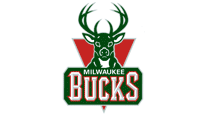


 Here's the
Here's the 





 It's a good idea to have the
It's a good idea to have the 


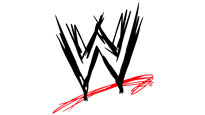
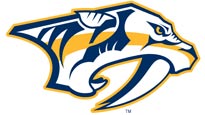



 This penguin harrassed her keeper for attention until he gathered her up in his lap, where she sat contentedly for five minutes. I want her keeper's job!
This penguin harrassed her keeper for attention until he gathered her up in his lap, where she sat contentedly for five minutes. I want her keeper's job! 



 Here is the
Here is the 


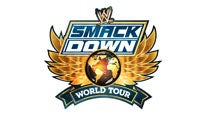

 Why Is iTunes Trying To Be Like Zune?
Why Is iTunes Trying To Be Like Zune? RIP Windows Live
RIP Windows Live 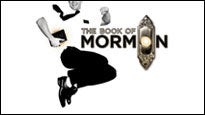

 , according to the author:JFA's reunion at thee parkside SF, CA
, according to the author:JFA's reunion at thee parkside SF, CA 
